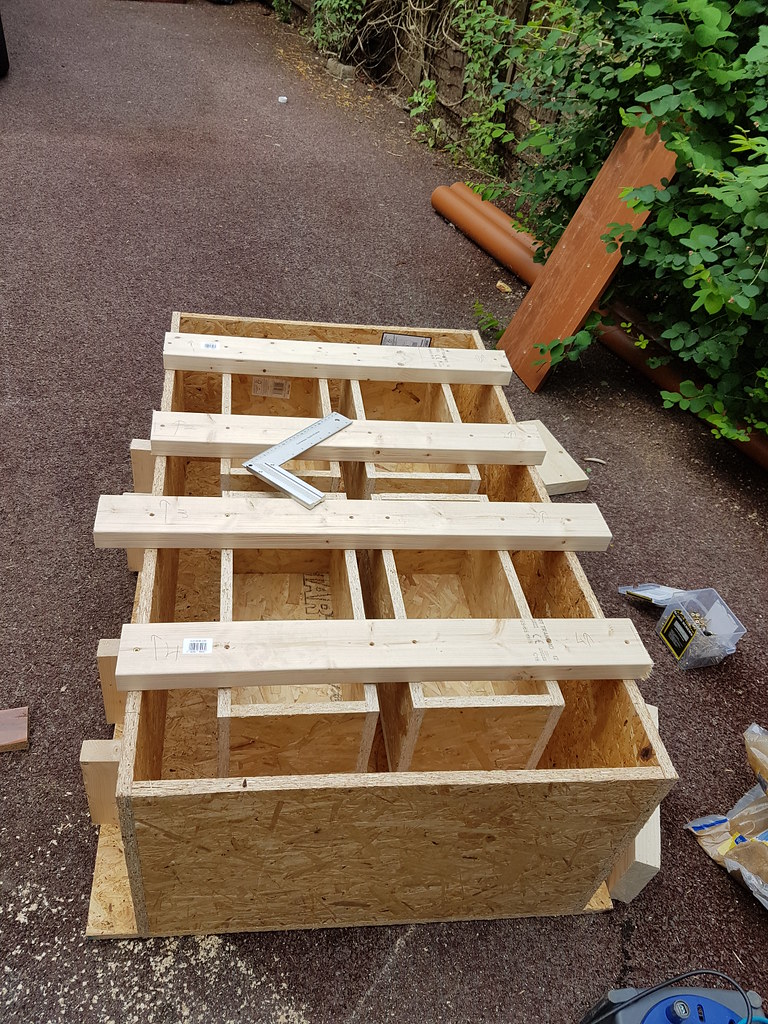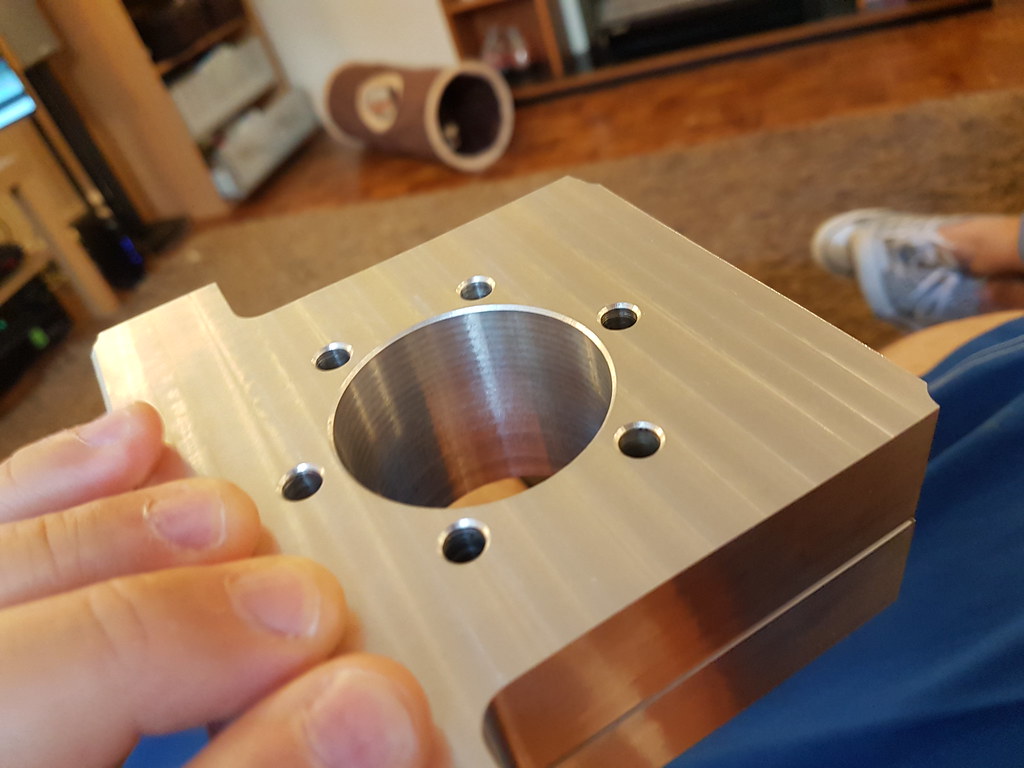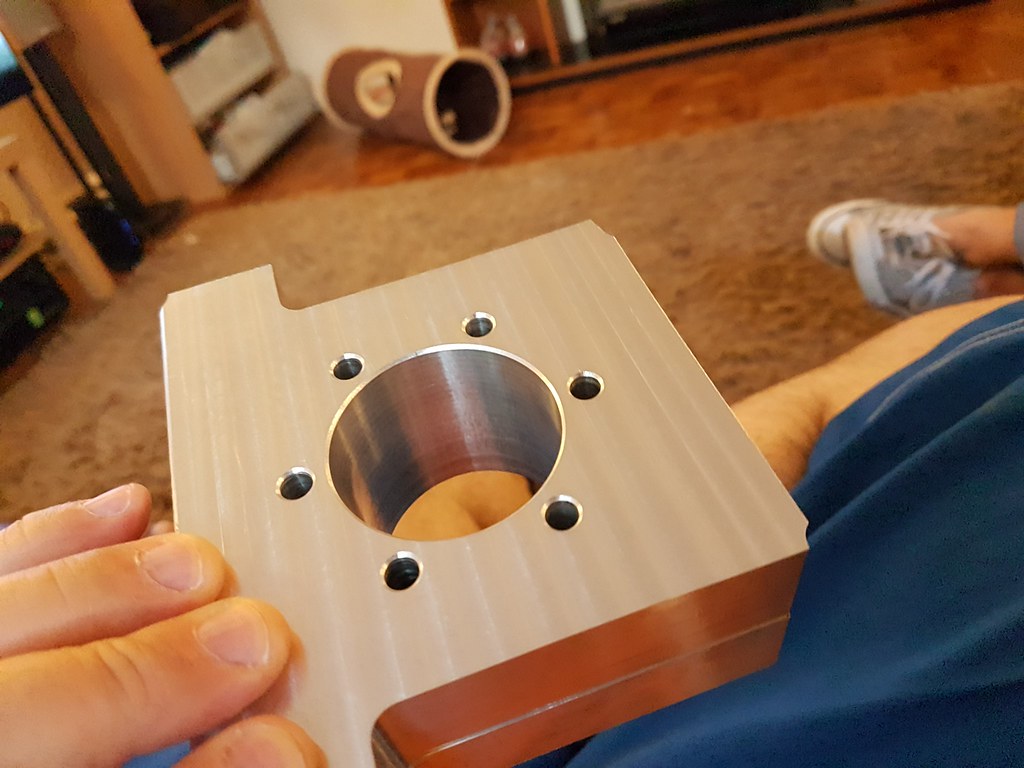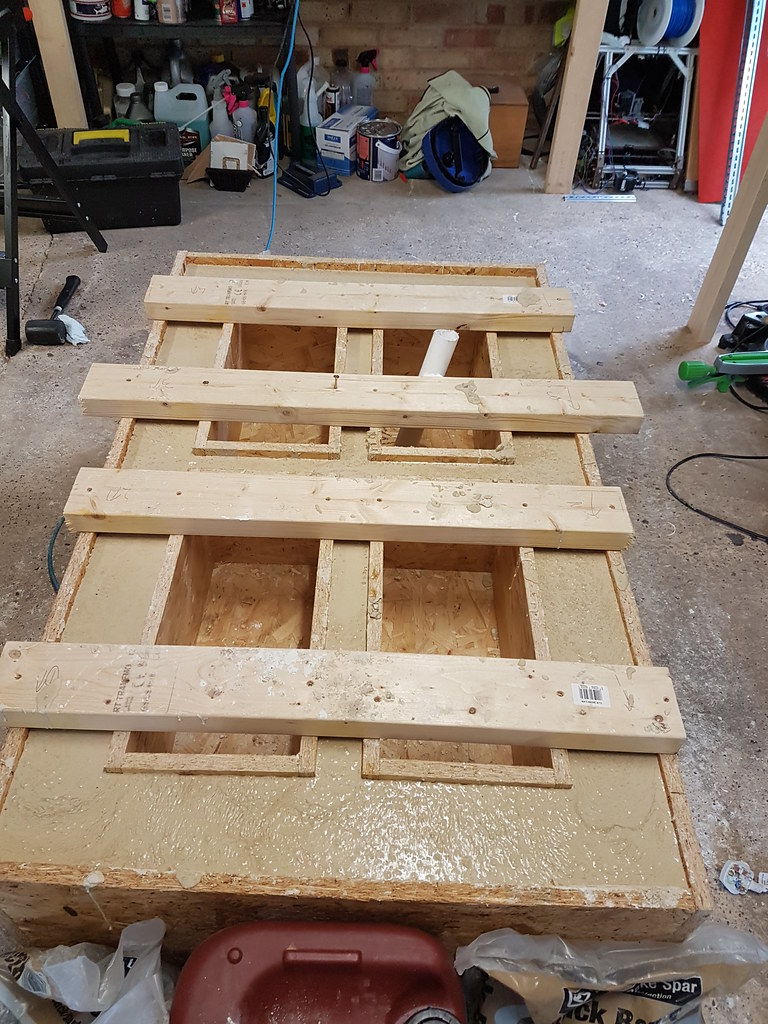Thread: Thor, or should that be Zeus?
-
01-06-2016 #91
Sure. It's probably a slight different way to do it, but Ill try and explain as best I can.
1. Cast the concrete, try and get it reasonably flat. Is it 'good enough', no.
2. Clean the concrete, grind the area to prepare for the DWH putty (or liquid, there are 2 options).
3. Place the putty along the location where the rail will sit (so in my case, roughly 50mm wide x 2 lengths).
4. Place a reference surface against the putty. The reference surface has to be perfectly flat (well, to whatever tolerance you need / want). The reference surface should have a release agent so that it does not stick to the putty.
5. Putty dries, remove the reference surface, the putty is now hard and has formed against the reference shape.
6. Either drill holes or remove the material used to block the holes (wood in my case). The putty would have cured over this.
7. Epoxy the M12 nuts into place, using the rails in location and putting a release agent around the bolts and threads of the nut.
8. Wait for the epoxy to cure, then tighten up.
The 'key' here is the reference surface. This has to be perfect. Ideally the X and Y are done by the structure and at the same time. Im still working on how best to do this. I have a granite surface plate which Ill likely use. I can make some surfaces on my mill (perhaps not as accurate) or I can cast putty against mild steel which is then 'correct' against the granite surface plate which is then in turn used for the machine.
Here is a vid of similar. They use a putty, drop the surface onto it. This is moglice .... not the same, but the principle is the same. The putty will form a 'perfect' copy of whatever you place against it and its as hard as concrete once cured. Its fairly expensive stuff. You also get it in liquid form which can be poured between two surfaces.
https://www.youtube.com/watch?v=BZuEH4nyBtw at 4min35 you will see what they have, once they lift the top surface, is a perfectly aligned surface. Once cured, its as hard as the concrete and has a similar hardness rating.
https://www.youtube.com/watch?v=dKdanHZmV_k this is a similar idea. The key is to have the 'master' to reference against.
-
The Following User Says Thank You to Chaz For This Useful Post:
-
05-06-2016 #92
Electrics now mostly done. Running 2 of the 3 axis in the video below. I'm missing a plug needed for the 3rd drive but all tested and runs. I still need to wire up:-
Spindle (when I decide what Ill use)
Limits
E Stop etc
Some pics below showing the 'mass' of wiring and what it looks like near completed. Still need to remove the white protective cover from the plate.
https://www.youtube.com/watch?v=RLCvlyi4Z_E



-
The Following User Says Thank You to Chaz For This Useful Post:
-
12-06-2016 #93
Starting to finish off the mold for the first casting as well as one of the bearing holders for my Y leadscrew.
The part was flipped over as its 50mm deep, my probe doesnt have the best accuracy so there is a 0.2mm or so step, doesnt affect the part however.



-
18-06-2016 #94
Managed to pour the mould today.
Some lessons learnt.
1. Make the mould stronger.
2. You use mix than you expect .... dont ask me where it all goes.
3. It's tedious .... just stick with it.
Here is the mix (0.2 water / cement) mix without superplastisizer.
https://www.youtube.com/watch?v=2IeEhFW44F8
Add some magic juice and it changes completely. Just to make it clear, the mix below has no more water, just 1.25l of plastisizer.
https://www.youtube.com/watch?v=4KfWcawy7b4
Just checked the pour now, still very liquid. One of the boxes moved but as it wasnt set yet I was able to fix it. Hoping that it will harden overnight.

-
18-06-2016 #95
Hi Chaz
I hope this is going to be OK, the cross section is very thin and if you haven't placed rebar in that lot i envisage problems(hope not)
regards
Mike
-
18-06-2016 #96
-
18-06-2016 #97
Have you got any images of the final design you settled on Chaz?
50mm thick UHPC is pretty strong!
-
18-06-2016 #98
-
18-06-2016 #99
The ribs won't add any strength without rebar. the mix for small cross sectional beams/lintles ect is 3parts aggregate(10mm) 2 parts sharp sand 1 poart cement. but you still need the rebar.
i feel really bad about this as i should have mentioned it earlier.
But you seem to have gone into it in detail as you have with the rest of the build.
Mike
-
18-06-2016 #100
http://www.moertelshop.com/PCE-Flies...uenstig-kaufen
Polycarboxylate is the normal liquid superplasticizer. The shop I just linked seem to be pretty good and reasonably priced.
I'm going to try them out for some of my own experimentation.
Cheers,
Fenza
Thread Information
Users Browsing this Thread
There are currently 1 users browsing this thread. (0 members and 1 guests)








 Reply With Quote
Reply With Quote

Bookmarks